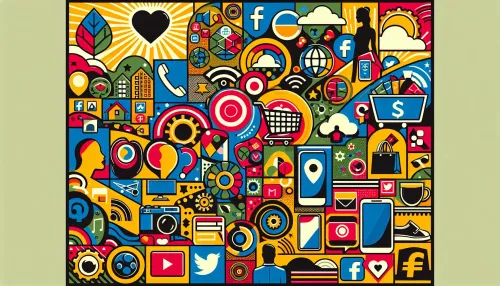Leveraging Hashtags vs. Broadcasting Commercials: Audience Engagement Redefined

In the ever-evolving landscape of digital marketing, the strategies for capturing audience engagement have undergone significant transformation. With the advent of social media and digital platforms, brands are presented with a plethora of options to connect with their target audience. This article explores the shifting paradigms of audience engagement, comparing historical methods of broadcasting commercials to contemporary approaches centered around leveraging hashtags and real-time interaction.
Capturing attention in a crowded space: Comparing audience engagement strategies across time periods.
Historically, television commercials held sway as the primary method for capturing audience attention. Brands invested substantial resources in crafting compelling ad content aiming to capture viewers during scheduled programming. However, the digital age has ushered in a new era where attention is fragmented across various platforms and channels. In this crowded digital space, the use of hashtags has emerged as a powerful tool for consolidating conversations and engaging audiences across different verticals.
Virality versus viewership ratings: Understanding success metrics then and now.
In traditional marketing, success metrics were largely characterized by viewership ratings and ad placement during prime time slots. The goal was to capture the largest possible audience during a single broadcast. However, the rise of social media and digital marketing has brought about a paradigm shift. Virality has become a key indicator of success, with brands striving to create content that resonates deeply with audiences, prompting widespread sharing and engagement. Tracking shares, comments, and user-generated content has become imperative in evaluating the impact of digital marketing campaigns.
Related Article: Meme Marketing Mastery: Riding the Viral Waves of Internet Culture
Content consumption habits: How digital platforms have altered viewer interactions with brands.
The emergence of digital platforms has fundamentally transformed how audiences interact with content and engage with brands. Unlike traditional television commercials, which were passive viewing experiences, digital platforms enable active engagement through comments, likes, shares, and user-generated content. Audiences now expect an immersive and interactive experience when engaging with brand content. As a result, brands are compelled to create content that not only captures attention but also encourages active participation from their audience.
Crafting shareable content versus memorable taglines: Strategy shifts in engaging audiences.
In the realm of traditional advertising, crafting memorable taglines was considered instrumental in leaving a lasting impression on viewers. However, in today's digital landscape, the focus has shifted towards creating shareable content that resonates with audiences on a personal level. With the pervasive influence of social media, brands are increasingly leveraging storytelling and user-generated content to foster meaningful connections with their audience. The emphasis is on creating content that not only communicates brand messaging but also cultivates a sense of community among consumers.
Related Article: TikTok Takeover: Dissecting the Platform’s Transformative Impact on Brand Visibility
Real-time interaction versus scheduled broadcasts: Enhancing customer connections through immediate feedback channels.
One of the most profound changes in audience engagement strategies lies in the shift from scheduled broadcasts to real-time interaction. Traditional commercials followed a linear communication model where brands delivered messages to passive audiences. Conversely, digital platforms facilitate real-time interactions where audiences can provide immediate feedback, engage in discussions, and participate in live events hosted by brands. This real-time interaction paves the way for dynamic customer connections and allows brands to adapt their strategies based on instant feedback from their audience.
As we navigate through this intricate web of evolving audience engagement strategies, it becomes abundantly clear that the dynamics of capturing audience attention have been redefined by digital marketing. Brands must adapt to these changes and embrace innovative approaches that resonate with today's audiences amidst the proliferation of digital channels and platforms.
Frequently Asked Questions
Traditional commercials primarily focused on scheduled broadcasts, targeting passive audiences through compelling ad content. In contrast, digital marketing leverages real-time interactions and active engagement, allowing brands to connect with audiences through comments, shares, and user-generated content, fostering a more immersive experience.
Success metrics in traditional marketing were based on viewership ratings and ad placements during prime time. Today, virality is a crucial metric, with brands aiming for content that resonates deeply and encourages sharing, comments, and user participation to gauge campaign effectiveness.
Real-time interaction allows brands to engage dynamically with their audience, providing immediate feedback and fostering discussions. This shift from passive viewing to active participation enhances customer connections, enabling brands to adapt their strategies based on audience responses and preferences.
Check Out These Related Articles

From Flyers to Feeds: Repurposing Classic Advertising Tactics for Social Media Success

The Reality Behind Social Media Reach: Dispelling Common Misconceptions for Effective Engagement

Social Media Advertising: Strategies for Targeted Reach and Brand Visibility

